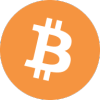The GENIUS Act Clears Crucial Senate Hurdle: Stablecoin Regulation Inches Closer to Reality
The GENIUS Act Clears Crucial Senate Hurdle: Stablecoin Regulation Inches Closer to Reality
Introduction
The Guaranteeing Stablecoins’ Innovation and Trust (GENIUS) Act has advanced past a critical procedural vote in the U.S. Senate, marking a significant step toward comprehensive federal stablecoin regulation. This bipartisan effort aims to establish clear rules for dollarpegged digital assets while balancing innovation, consumer protection, and financial stability. Below is a detailed breakdown of the legislation’s progress, key provisions, stakeholder reactions, and implications for the crypto industry.
-
Legislative Progress
Senate Committee Approval: The GENIUS Act passed the Senate Banking Committee with bipartisan support (vote tally: 18–12), signaling growing consensus on the need for stablecoin oversight.
Next Steps: The bill moves to the full Senate floor for debate and a final vote. If approved, it would require reconciliation with the House’s competing stablecoin bill (Clarity for Payment Stablecoins Act) before becoming law.
Timeline: Observers predict a final vote could occur by Q4 2024, contingent on political negotiations. -
Key Provisions of the GENIUS Act
a. Regulatory Framework
Issuer Requirements: Stablecoin issuers must maintain 1:1 reserves in cash or cashequivalent assets (e.g., Treasury bills) and undergo regular audits.
Licensing: Nonbank issuers may operate under state or federal charters, but federally chartered entities gain preemption over conflicting state laws.
FDIC Backstop: Stablecoins are explicitly excluded from FDIC insurance coverage, though issuers must disclose this to users.b. Consumer Protections
Redemption Rights: Holders must be able to redeem stablecoins for USD within 24 hours.
Disclosures: Issuers must provide clear terms regarding reserve composition, risks, and redemption mechanisms.c. AntiMoney Laundering (AML) Compliance
Travel Rule: Applies to transactions over $10,000, requiring identity verification for crossborder transfers.
OFAC Sanctions: Issuers must screen wallets and transactions against sanctions lists.d. Innovation Safeguards
Sandbox Programs: State and federal regulators may create sandboxes for testing new stablecoin models.
CBDC Clarity: The bill prohibits the Federal Reserve from issuing a central bank digital currency (CBDC) without congressional approval, addressing GOP concerns. -
Stakeholder Reactions
Supporters
Industry Groups (e.g., Blockchain Association): Praise the bill for providing regulatory certainty and fostering U.S. leadership in crypto.
Bipartisan Lawmakers: Senators Kyrsten Sinema (IAZ) and Bill Hagerty (RTN) highlight the balance between innovation and risk mitigation.Critics
Progressive Democrats: Argue the bill lacks stringent capital requirements for issuers, potentially endangering financial stability.
Privacy Advocates: Oppose transaction surveillance mandates, citing overreach. -
Implications for the Crypto Market
Market Stability: Clear rules could reduce volatility by mitigating risks like TerraUSDstyle collapses.
Competitive Landscape: Federally licensed issuers (e.g., PayPal’s PYUSD) may gain an edge over decentralized alternatives.
Global Impact: The U.S. risks falling behind the EU’s MiCA framework if delays persist. -
Challenges Ahead
HouseSenate Reconciliation: Differences with the House bill (e.g., state vs. federal primacy) could prolong negotiations.
Fed/Treasury Concerns: Regulators may push for stricter oversight of algorithmic stablecoins.Conclusion
The GENIUS Act’s advancement reflects a pivotal moment for U.S. crypto policy. While hurdles remain, its passage would mark the first major federal crypto law, setting a template for future digital asset regulation. Stakeholders are urged to monitor amendments and prepare for compliance shifts.
Sources: Senate Banking Committee documents, CoinDesk, Bloomberg Crypto, stakeholder statements.
Note: This summary reflects the bill’s status as of [insert date]. For realtime updates, consult official legislative trackers.
本文发布于2025年05月20日12:52,已经过了125天,若内容或图片失效,请留言反馈 转载请注明出处: TronLink官网下载-TRON-TRX-波场-波比-波币-波宝|官网-钱包-苹果APP|安卓-APP-下载
本文的链接地址: https://tianjinfa.org/post/1770
扫描二维码,在手机上阅读
文章作者:TronLink
文章标题:The GENIUS Act Clears Crucial Senate Hurdle: Stablecoin Regulation Inches Closer to Reality
文章链接:https://tianjinfa.org/post/1770
本站所有文章除特别声明外,均采用 CC BY-NC-SA 4.0 许可协议,转载请注明来自TronLink !
文章标题:The GENIUS Act Clears Crucial Senate Hurdle: Stablecoin Regulation Inches Closer to Reality
文章链接:https://tianjinfa.org/post/1770
本站所有文章除特别声明外,均采用 CC BY-NC-SA 4.0 许可协议,转载请注明来自TronLink !
打赏
如果觉得文章对您有用,请随意打赏。
您的支持是我们继续创作的动力!
微信扫一扫
支付宝扫一扫
您可能对以下文章感兴趣
-

使用Go语言构建TronLink钱包SDK-完整指南
2011/01/02
-

TronLink 钱包:开启波场 TRON 生态的数字资产管理新体验
在区块链技术蓬勃发展的今天,波场 TRON 以其高效、低费用和强大的生态系统,在全球区块链领域占据重要地位。而 TronLink 钱包,作为波场生态的核心入口,为用户提供了安全、便捷且功能丰富的数字资产管理服务。无论是想要探索波场生态的 DApp,还是进行 TRX 及各类代币的存储与交易,TronLink 钱包都能满足你的需求。本文将详细介绍 TronLin...
2025/05/04
-

TronLink钱包集成开发指南:PHP+CSS+JS+HTML5实现
2011/01/04
-

波场TRON与vSport达战略合作 开启足球区块链新纪元
2025/05/06
-

Pepe币近期动态:社区热度回升与生态进展
2011/01/02
-

SOL生态近期迎来多项技术升级与生态进展,为开发者与用户带来更高效体验。据官方消息,SOL网络已完成最新版本客户端升级,交易处理速度与稳定性显著提升,网络平均出块时间缩短至400毫秒以内。
2011/01/02
-

TronLink官网下载指南:TRON(TRX/波场/波币/波宝)钱包官方APP下载
2025/05/05
-

TronLink 钱包:波场生态的得力助手
在当今的加密货币领域,波场(TRON)凭借其独特的技术和广泛的应用场景,吸引了众多投资者和开发者的目光。而 TronLink 钱包作为波场生态系统中一款重要的数字钱包,为用户提供了便捷、安全的数字资产管理和交易服务。本文将为你详细介绍 TronLink 钱包的官网下载方式以及其丰富的功能特点。 一、TronLink 钱包概述 TronLink 钱包又称波...
2025/05/04
-

比特币市场动态:理性看待数字资产波动
2011/01/02
-

原创TronLink钱包HTML5实现方案
2011/01/02


 TronLink
TronLink 
 比特币价格
比特币价格